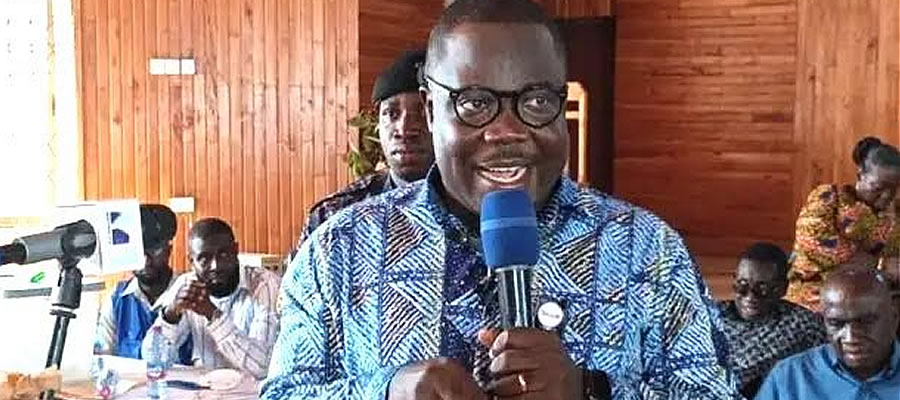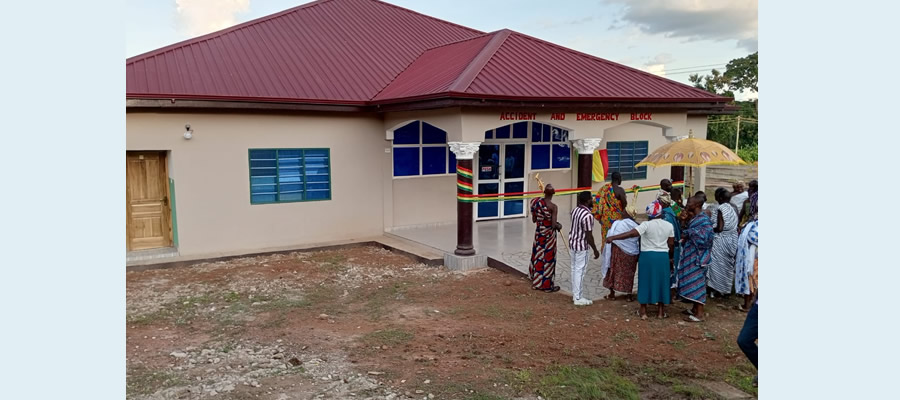

The physical and natural environment is an essential element or factor contributing to socio-economic development of the District. The physical features of the District encompasses the natural environment; climate, vegetation, relief and drainage, location and size. A blend of these features and the socio-cultural environment determines the conditions under which the people live, develop and eventually determines their quality of life.
Location and size
The Dormaa West District is located in the western part of the Brong Ahafo Region. It has boundaries in the north by the Dormaa Central Municipality, in the east by Asunafo North Municipality, in the west by La Cote d’Ivoire and in the south west by Bia East District. The District capital is Nkrankwanta, located about 125 kilometres away from the regional capital, Sunyani. It has 96 settlements, one traditional authority and one constituency, Dormaa West. The proximity of the District to La Cote D'Ivoire promotes international trade and positive socio-cultural exchanges between the District and the Akan people living in La Cote D'Ivoire. The District has a total land area of 381 square kilometres.
Climate and vegetation
Dormaa West District is located within the wet semi-equatorial climate region with a double maxima rainfall regime. The mean annual rainfall is between 125cm and 175cm. The first rainy season starts from May and ends in June; with the heaviest rainfall occurring in June while the second rainy season is from September to October.
The dry season is quite pronounced with the main season beginning around the latter part of November and ending in February. It is often accompanied by relative humidity of 75 - 80 percent during the two rainy seasons and 70 - 72 percent during the rest of the year. The highest mean temperature of the District is about 30ºC and occurs between March and April and the lowest about 26.1ºC in August. The climatic condition of the District is suitable for the cultivation of various cash crops such as cocoa, coffee and food crops such as plantain, cocoyam and cassava.
The major vegetation types are the unused forest, partly broken forest and extensively cultivable forestland and forest reserve (Pamu-Mpameso Forest Reserve covering 197.67 square kilometres). The major types of flora found in these forests range from shrubs and climbers to giant silk cotton trees. The predominant timber species are Wawa, Odum, Sapele and Mahogany (DMTDP, 2010-2013). The availability of these timber species has contributed extensively to the growth of the carpentry industry in the District. The activities of timber firms within the District have contributed to the depletion of the forest cover with its adverse consequences on climate.
Relief and drainage
The District topography is generally undulating and rises between 180 metres and 375 metres above sea level. The highest point is a little over 235 metres above sea level. The medium range rises gradually between 240 metres and 300 metres above sea level (DMTDP, 2010-2013).
The area is well drained as evidenced by the network of rivers spread out within the District. The rivers are mostly perennial due to the double maxima rainfall, which is experienced in the area. Notable among them are the Bia, Nkasapim and Pamu rivers. These rivers are mostly used as source of water for the cultivation of vegetables such tomatoes, pepper and okra during the dry season. There are however, traditional restrictions on the use of the rivers for fishing.
Geology, minerals and soils
The rocks underlying the soils are of the Birimian formation which covers more than three quarters of the closed forest zone. Soils in the District belong to the Bekwai-Nzema Compound Associations. The Nkrankwanta Association dominates the south-western section of the District. The Nzema series, which are made up of quartz gravels and ironstone are moderately well-drained. Currently, the soil types within the District tend to support cultivation of both commercial and domestic food crops, which include cocoa, coffee, oil palm, citrus, cola-nuts, plantain, cassava and maize.
Date Created : 11/23/2017 4:41:13 AM












 facebook
facebook
 twitter
twitter
 Youtube
Youtube
 +233 593 831 280
+233 593 831 280 0800 430 430
0800 430 430 GPS: GE-231-4383
GPS: GE-231-4383 info@ghanadistricts.com
info@ghanadistricts.com Box GP1044, Accra, Ghana
Box GP1044, Accra, Ghana